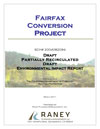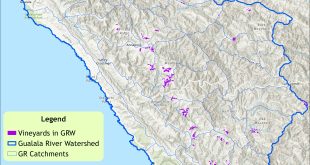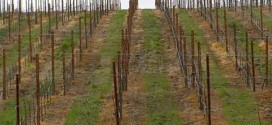Artesa (“Fairfax”)
vineyard conversion
Partially Recirculated Draft
Environmental Impact Report
In March, 2011, the California Department of Forestry and Fire Protection released a  Partially Recirculated Draft Environmental Impact Report (RDEIR) for the Artesa (“Fairfax”) Vineyard Conversion to update two DEIR sections: Chapter 3.5, Cultural Resources; and Impact Discussion 4-3, Cumulative Contribution to Global Climate Change, in the Cumulative Impacts chapter.
Partially Recirculated Draft Environmental Impact Report (RDEIR) for the Artesa (“Fairfax”) Vineyard Conversion to update two DEIR sections: Chapter 3.5, Cultural Resources; and Impact Discussion 4-3, Cumulative Contribution to Global Climate Change, in the Cumulative Impacts chapter.
Deadline for public comments (limited to the two sections of the RDEIR) was Wednesday, April 27, 2011 at 5:00 p.m. Pacific Time.
Comments on the RDEIR |
For additional information, see:
 Artesa (“Fairfax”) vineyard conversion EIR
Artesa (“Fairfax”) vineyard conversion EIR
The Draft Environmental Impact Report (EIR) released in 2009 claims that the proposed destruction of 171 acres of coastal redwood forest to plant a vineyard would have no significant environmental or cultural impacts.
 Multinational Targets the Gualala River
Multinational Targets the Gualala River
What if the third largest winery in the world, based in Spain, chose the recovering Gualala River watershed for a large vineyard project?
 Pomo heritage threatened
Pomo heritage threatened
The Artesa vineyard project area is “very possibly the Kashaya Pomo village Kabatui” where “human remains may be present,” and which contains rich archaeological areas that are eligible for listing in the National Registry of Historic Places.
 Pomo elders speak out about vineyards
Pomo elders speak out about vineyards
Where we used to live, no one can see anything now. It is time we open our mouths. Those vineyard people are interfering with our ancestors’ area…
 Erasing Native American history?
Erasing Native American history?
As an early morning mist filters through the Redwoods in the village of Annapolis in NW Sonoma County, a Pomo elder of the Kashia band walks through the forest toward an ancient settlement site…
 Desecration of Pomo history
Desecration of Pomo history
A first step toward satisfying the responsibility for Europeans and their descendants in North America would be to treat indigenous people with respect.
 Friends of Gualala River Protecting the Gualala River watershed and the species living within it
Friends of Gualala River Protecting the Gualala River watershed and the species living within it


